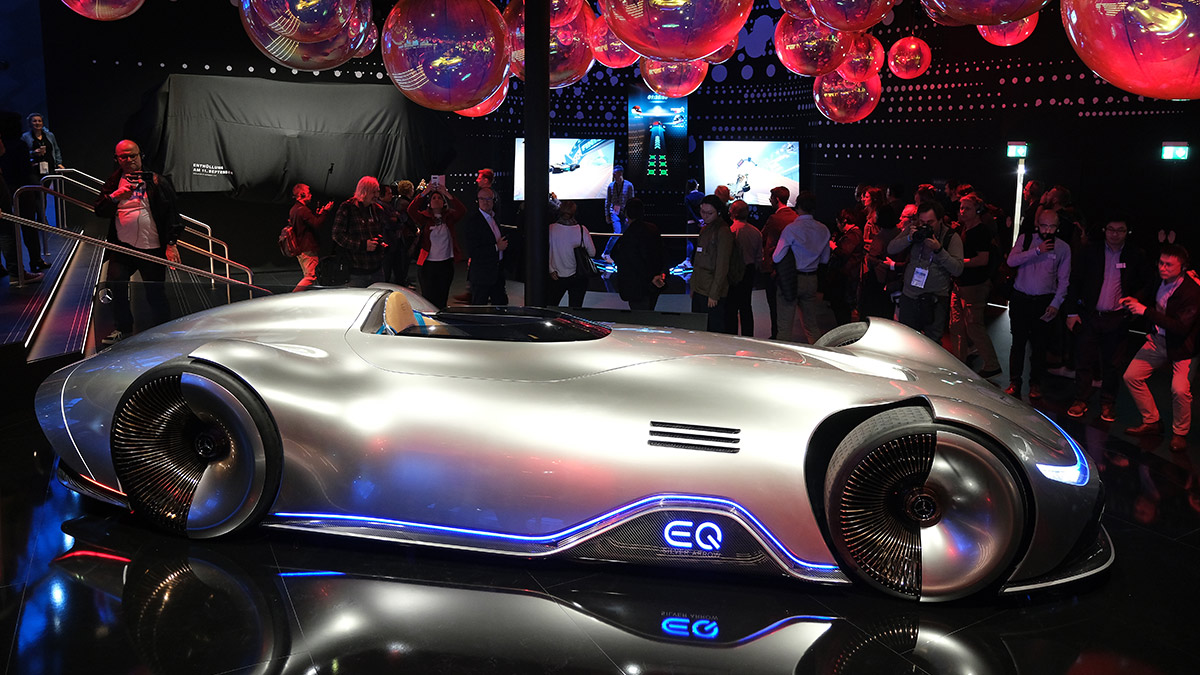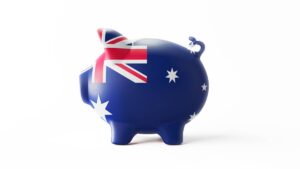ASX small caps position for the next ‘generational mega-trend’ as Europe goes green

European carmaker Mercedes debuts the EQ Silver Arrow, one of its prototype electric vehicles. (Pic: Getty)
The clean energy transition is big business, and key input materials such as lithium, nickel and graphite are back in vogue.
Demand projections from high-profile end users such as Tesla attract plenty of attention.
But for ASX small cap investors, it may pay to keep a close eye on Europe.
At a macro policy level, the EU (European Union) has committed to net-zero carbon emissions by 2050.
That’s a lofty goal and like any major policy shift, it creates numerous ripple effects, including capital flows.
Horizon Europe is one example – a €100 billion research and innovation fund that will succeed Horizon 2020 (the inaugural €80 billion fund).
It amounts to a “generational mega-trend” says Peter Fox, head of corporate development at listed graphite play Mineral Commodities (ASX:MRC).
Central to Europe’s plans is a clearly-stated goal to secure its clean energy supply chain – and that’s where Aussie companies are getting involved.
Keep it clean…
Mass EV (electric vehicle) rollouts are on the cards, but not if the batteries that power them are built using high-carbon inputs.
“The EU has coined the term of a ‘battery passport’, where all the raw materials that go into a battery are going to have to be validated,” Fox explained.
So over the medium term, products that don’t meet the relevant standards on carbon footprints or ethical manufacturing won’t be eligible to gain access to the market.
Fox said that could provide a key opportunity for Australian companies as Europe looks to diversify its supply chain away from China.
For example, graphite – the core mineral in MCR’s Norway-based battery anode project – is primarily supplied by China.
Except it’s purified using hydrofluoric acid, which has been classified as a dangerous chemical with potentially harmful side effects.
“We could make graphite cheaply using hydrofluoric acid. But Europe doesn’t want that, ultimately that will be banned that coming into Europe so from where we sit, that’s where this market’s heading.”
And keep it green
Nickel explorer Blackstone Minerals (ASX:BSX) is another ASX player that’s focused on the Europe opportunity.
Speaking with Stockhead, company spokesperson Tessa Kutscher said BSX is well-suited to fit Europe’s supply chain criteria, with its core project in Vietnam which generates power via the local hydro grid.
“There’s nickel out there but if you want to go green then you have to look at the supply chain certainly,” Kutscher said. “It doesn’t make sense to have a carbon footprint to actually get there.”
She added that for BSX, the clean power source is “right there, so we just have to switch it on”.
But establishing the infrastructure to generate clean energy at the source is a capital-intensive exercise. And it’s driving another new shift, where major end users are coming on board to help.
“(End buyers) are saying, ‘we want the product, but we’ll also help you to build the infrastructure to minimise the carbon footprint.”
“So funnily enough, they’re becoming investors and joint venture partners straight away to make sure the whole story is sustainable.”
Capital flows
As with all things related to Europe’s green energy future, the capital flows from end users are big.
Earlier this month, Daimler (parent company of Mercedes Benz) announced a new €70 billion investment plan, with a focus on electric vehicles and digitisation.
And Kutscher said it’s not just big end-users; major investment funds are also getting involved.
For example, Blackstone’s $20.8m raise in September included a cornerstone investment from Fidelity International, a subsidiary of the $US3.3 trillion global fund manager.
“We had to tick the (sustainability) boxes there. It’s pretty simple, if we don’t tick the boxes they wouldn’t invest.”
“So that’s something for Australian companies to get our heads around, because I think a lot of local companies tend to say ‘why should I change things?’
“Those two trends are both examples of what’s coming form Europe – big instos going green, and the end users just having that massive demand.”
Help is there – if you want it
For Fox, increased private sector involvement is also a function of long-term trends in the allocation of capital.
Ultimately, investors “know there’s a ton of state money going into this, and they’ll need in-kind contributions from the private sector, so fund managers getting in on the act too”, he said.
State backing at the policy levels also filters through to dedicated support networks such as InnoEnergy, a division of the European Institute of Innovation (EIT).
“It’s effectively a quasi-state entity that we’ll engage with. Whether it’s financiers, end users, off-takers, regulators, R&D experts – they will go and plug you in,” he said.
“So it’s a highly proactive environment up there where all these state groups are incredibly accommodating to assist you execute on your business strategy.”
That’s why Fox views the shift as a “generational megatrend. In the future we’ll talk about when the world transitioned, and the Europeans are the leaders here.”
“The big issue these guys are facing is they’re starting to realise they’re just not going to have enough raw materials on the supply side,” he said.
“It will be a case of ‘who do we talk to when it comes to mining? We’re going to have to talk to the Australians.”
Ultimately, Aussie companies have an opportunity to leverage their IP and become a preferred supplier in a market with high demand.
“Particularly when it comes to the low carbon footprint of their products,” Fox says.
“We’ve noted a material pickup in contacts from end users and OEM (original equipment manufacturers), and that’s really gained momentum in the last couple of months,” he said.
“Over the next 18 months to two years, we’re going to hear a lot more about Aussie miners pegging ground over there or signing deals. It will be another big thematic, especially in the small cap space.”
At Stockhead, we tell it like it is. While Mineral Commodities and Blackstone Minerals are Stockhead advertisers, they did not sponsor this article.
UNLOCK INSIGHTS
Discover the untold stories of emerging ASX stocks.
Daily news and expert analysis, it's free to subscribe.
By proceeding, you confirm you understand that we handle personal information in accordance with our Privacy Policy.








